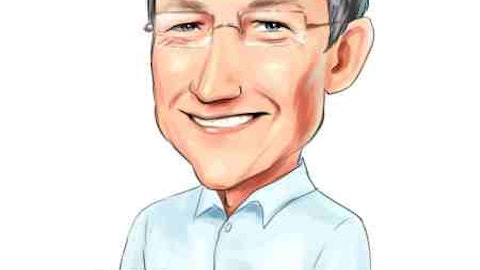Richard Fairbank: Okay. Thanks, Ryan. So consumer credit metrics remain strong. And of course, as we’ve seen, they’ve been normalizing steadily through 2022 and are approaching pre-pandemic levels. At first, normalization was more pronounced in some segments more than others. It was — of course — and by the way, this is always the case that front book, new originations tend to be higher. So, that would have been shocking, had it been different. But the other thing we also said and talked to investors about it was more — normalization was happening everywhere, but it was more pronounced at the lower end of the market. More recently, we’ve actually seen more uniform trend of normalization across businesses and segments, so, for example, across various FICO ranges and also across income levels.
When we index them on credit metrics back to where they were before the pandemic, the sort of rest of the credit spectrum and rest of the income spectrums caught up to the, very recently in the last few months, to the lower end. So really, if I pull on that, it looks like the normalization is pretty consistent across the board. And — yes, go ahead, Ryan.
Ryan Nash: No, no, go for it. I’ll ask my follow-up when you finish.
Richard Fairbank: So, you asked various competitors are forecasting or talking about different times at which things cross 2019 levels. I think at Capital One, we’re not making specific predictions on that. But I think the key thing I would have you look at is the delinquency metrics. Delinquency metrics are the best single predictor of where things are going to go in the near term. And in fact, if we look at flow rates, we can see that very early flow rates into delinquency buckets are pretty normalized. So, we’re not giving specific guidance. But we would say, look at the credit metrics, look at the dynamics across other metrics, but we feel this is — it’s clearly normalizing as we see it.
Ryan Nash: Got it. And then, Rich, maybe to follow up on the comments regarding the efficiency being flat to modestly down. I think last quarter, you were talking about modest efficiency improvements. There have been headlines about the firm reducing some headcount. So, I’m just curious, has anything changed in terms of your expectations for efficiency improvement? I guess given the pace of revenue growth that’s expected and contemplated, is there any acceleration in investments that’s taking place to drive the stable to modestly efficient — improving efficiency? Thank you.
Richard Fairbank: Yes. Ryan, our efficiency outlook is exactly the same as it was last quarter. If you recall, actually, we guided to the — for full year 2022 for efficiency to be flat — basically kind of flat to 2021, and then modestly down for 2023 relative to 2021. What happened is that €˜22 came in a little bit lower. So, our guidance of flat to modestly down, it’s the same outlook as we had before. And so, there’s not big investments behind that. It’s a continued journey of Capital One to lean into our opportunities to continue to invest in the tech opportunities that we see and the opportunities to create breakthroughs in the marketplace and continue to transform how we work. But pulling way up the sort of story if you kind of pull way back on operating efficiency, the journey that where we’ve driven 440 basis points of improvement from 2013 — well, through 2019.
And then we had the whole pandemic thing. But if I pull way up the gradual operating efficiency improvement is what we are continuing to drive for through the leveraging of our tech transformation even as we continue to invest.
Operator: And our next question comes from the line of Betsy Graseck of Morgan Stanley.





